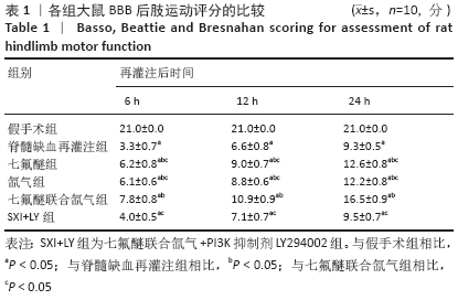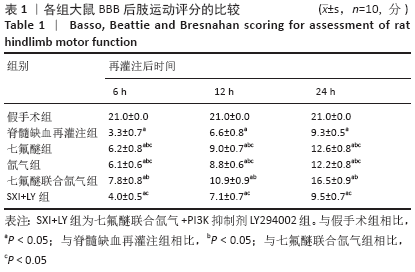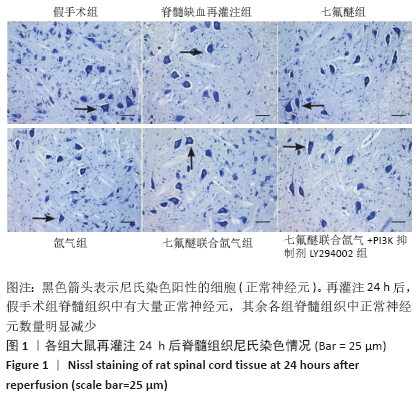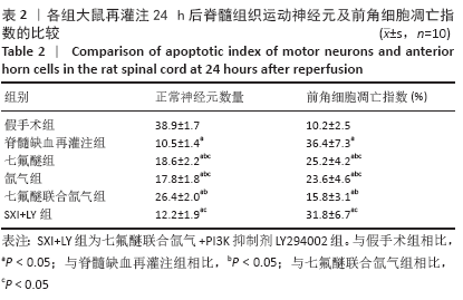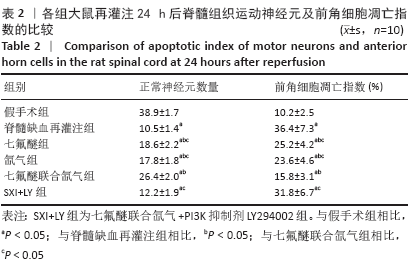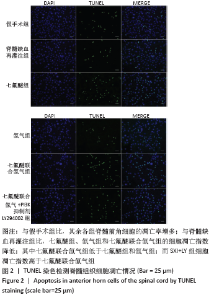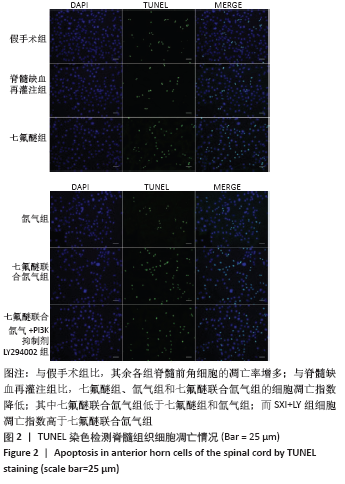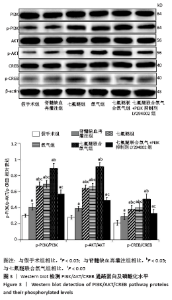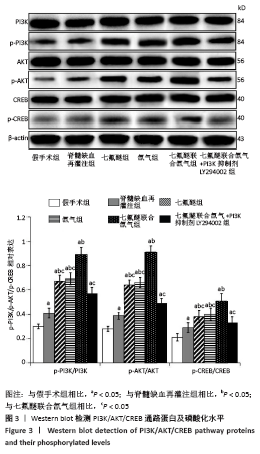[1] HAAPANEN H, HERAJARVI J, ARVOLA O, et al. Remote ischemic preconditioning protects the spinal cord against ischemic insult: An experimental study in a porcine model. J Thorac Cardiovasc Surg. 2016;151(3):777-785.
[2] 程斌, 杨峰, 李锋涛, 等. 人参皂苷Rb通过减轻线粒体损伤对大鼠脊髓缺血再灌注损伤的保护作用[J]. 中国康复理论与实践,2018, 24(6):629-633.
[3] 李璟, 张丽娜, 郝海智, 等. 七氟醚预处理对大鼠离体心脏缺血再灌注时心肌细胞肌质网功能的影响[J]. 中华麻醉学杂志,2018, 38(3):287-291.
[4] SHI CX, DING YB, JIN FYJ, et al. Effects of sevoflurane post-conditioning in cerebral ischemia-reperfusion injury via TLR4/NF-κB pathway in rats. Eur Rev Med Pharmacol Sci. 2018;22(6):1770-1775.
[5] YU Q, LI L, LIANG WM. Effect of sevoflurane preconditioning on astrocytic dynamics and neural network formation after cerebral ischemia and reperfusion in rats. Neural Regen Res. 2019;14(2):265-271.
[6] 李茜, 连春微, 方利群, 等. 氙气预处理对未成熟心肌缺血/再灌注损伤及氧化应激的影响[J]. 四川大学学报(医学版),2014, 45(5): 780-784.
[7] 田蕾, 卢家凯, 程卫平. 氙气对神经系统缺血再灌注损伤的保护作用[J]. 心肺血管病杂志,2016,35(10):840-842.
[8] DE DEKEN J, REX S, MONBALIU D, et al. The efficacy of noble gases in the attenuation of ischemia reperfusion injury: a systematic review and Meta-Analyses. Crit Care Med. 2016;44(9):e886-896.
[9] LI XQ, CAO XZ, WANG J, et al. Sevoflurane preconditioning ameliorates neuronal deficits by inhibiting microglial MMP-9 expression after spinal cord ischemia/reperfusion in rats. Mol Brain. 2014;7(1):69.
[10] YANG YW, LU JK, QING EM, et al. Post-conditioning by xenon reduces ischaemia-reperfusion injury of the spinal cord in rats. Acta Anaesthesiol Scand. 2012;56(10):1325-1331.
[11] 曹宁, 魏兴, 陈培敏, 等. 七氟醚预处理对大鼠脊髓缺血再灌注损伤的影响及自噬在其中的作用[J]. 中华麻醉学杂志,2013,33(5): 612-615.
[12] 田蕾, 王昀璐, 金沐, 等. 50%氙气后处理对兔脊髓缺血再灌注损伤运动功能保护作用及时间窗效应研究[J].心肺血管病杂志, 2017,36(2):125-129.
[13] LUO Y, MA D, IEONG E, et al. Xenon and sevoflurane protect against brain injury in a neonatal asphyxia model. Anesthesiology. 2008;109(5): 782-789.
[14] KIM HN, KIM YR, JANG JY, et al. Electroacupuncture inhibits phosphorylation of spinal phosphatidylinositol 3-kinase/Akt in a carrageenan-induced inflammatory rat model. Brain Res Bull. 2012; 87(2-3):199-204.
[15] 刘杨, 苗宇船. 大鼠脊髓损伤早期PI3K/Akt/mTOR信号转导通路的活性改变及其与后肢运动功能恢复的关系[J]. 上海交通大学学报(医学版),2015,35(6):804.
[16] 胡莉琼, 奉振成, 张延祠, 等. 罗西格列酮对脊髓损伤大鼠后肢运动功能恢复的影响[J].中华创伤杂志,2019,35(6):568-576.
[17] LIU ZG, LI Y, JIAO JH, et al. MicroRNA regulatory pattern in spinal cord ischemia-reperfusion injury. Neural Regen Res. 2020;15(11):2123-2130.
[18] 任小波, 王桂华, 路坦, 等. 脂氧素受体激动剂BML-111对脊髓缺血再灌注损伤模型大鼠的神经保护作用[J]. 中国组织工程研究, 2016,20(18):2642-2647.
[19] JANG JY, LEE HK, YOO HS, et al. Phytoceramide ameliorates-amyloid protein-induced memory impairment and neuronal death in mice. Arch Pharm Res. 2017;40(6):760-771.
[20] 邱月, 邢雪松, 吕威力. PI3K/Akt和Wnt/β-catenin信号通路在大鼠脑缺血再灌注损伤中的相互作用[J]. 中风与神经疾病杂志,2018, 35(11):978-982.
[21] ZHOU ZQ, LI YL, AO ZB, et al.Baicalin protects neonatal rat brains against hypoxic-ischemic injury by upregulating glutamate transporter 1 via the phosphoinositide 3-kinase/protein kinase B signaling pathway. Neural Regen Res. 2017;12(10):1625-1631.
[22] 曹阳月. 脑缺血后处理与PI3K/Akt信号转导通路的研究进展[J]. 卒中与神经疾病,2015,22(3):179-181.
[23] 费海彬, 刘荣国, 许云禄, 等. PTEN蛋白在七氟醚后处理激活PI3K/Akt信号通路减轻大鼠脑缺血再灌注损伤中的作用[J]. 中华麻醉学杂志,2014,34(5):612-615.
[24] LAI Z, ZHANG L, SU J, et al. Sevoflurane postconditioning improves long-term learning and memory of neonatal hypoxia-ischemia brain damage rats via the PI3K/Akt-mPTP pathway. Brain Res. 2016;1630:25-37.
[25] 刘诗瑶, 侯思雨, 杨彦伟, 等. 氙气延迟后处理诱导蛋白激酶B信号通路活化对大鼠脊髓缺血再灌注损伤的保护作用[J]. 中国循环杂志,2015,30(5):498-502.
[26] LIU S, YANG Y, JIN M, et al. Xenon-delayed postconditioning attenuates spinal cord ischemia/reperfusion injury through activation AKT and ERK signaling pathways in rats. J Neurol Sci. 2016;368:277-284.
[27] XIE L, YU S, YANG K, et al. Hydrogen sulfide inhibits autophagic neuronal cell death by reducing oxidative stress in spinal cord ischemia reperfusion injury. Oxid Med Cell Longev. 2017;(1):8640284.
[28] DURGAN DJ, PULINILKUNNIL T, VILLEGAS-MONTOYA C, et al. ischemia/reperfusion tolerance is time-of-day-dependent: mediation by the cardiomyocyte circadian clock. Circ Res. 2010;106(3):546-550.
|
